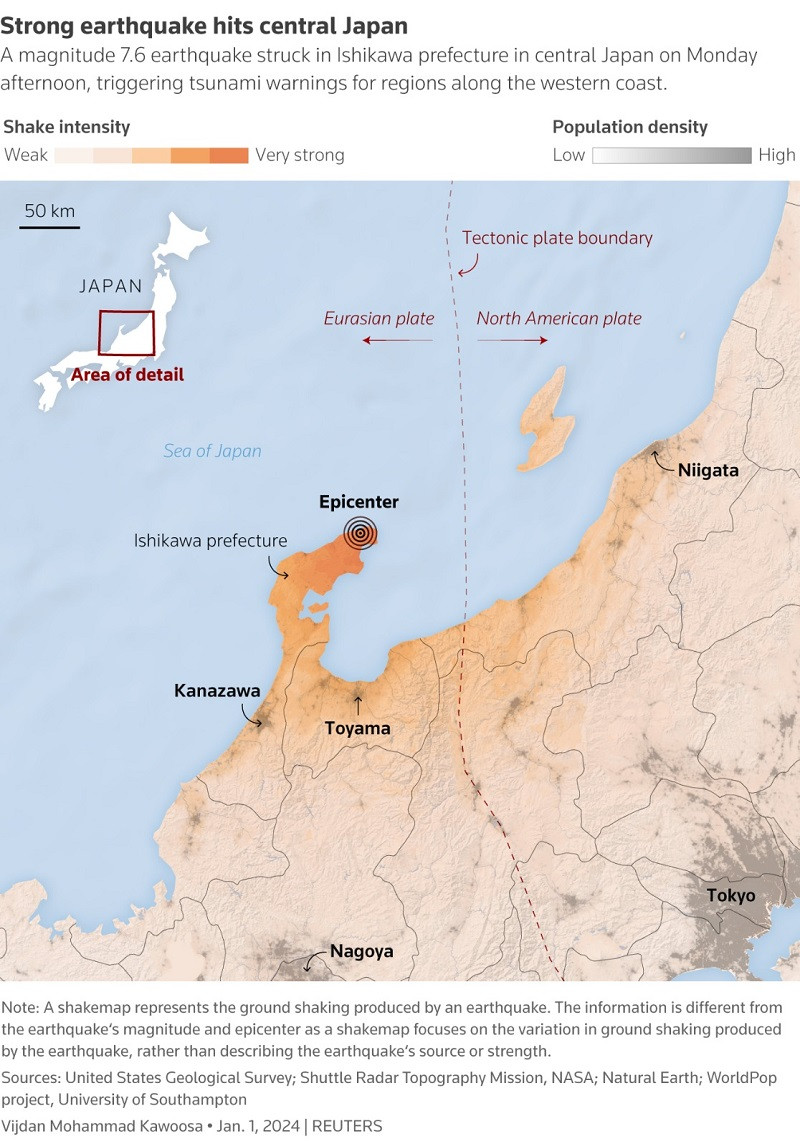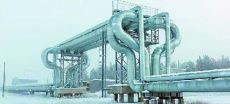[vc_row][vc_column][vc_column_text dp_text_size=”size-4″]On Monday, central Japan experienced a powerful earthquake, prompting evacuation warnings for certain areas along its west coast. The seismic event resulted in building destruction, power outages in numerous homes, and disruptions to regional travel.
The earthquake, initially registering a magnitude of 7.6, generated approximately 1-meter waves along parts of the Sea of Japan coast, with authorities cautioning the possibility of larger waves. The Japan Meteorological Agency (JMA) issued tsunami warnings for the coastal prefectures of Ishikawa, Niigata, and Toyama. Although a major tsunami warning for Ishikawa was initially issued, it was later downgraded.
Tsunami warnings were also issued in Russia for Vladivostok and Nakhodka. Notably, several houses were destroyed, and military units were deployed to assist in rescue operations. Government spokesperson Yoshimasa Hayashi conveyed that authorities were still evaluating the extent of the damage.
Given the seismic activity in the area over the past three years, a JMA official, Toshihiro Shimoyama, warned of the possibility of more strong quakes in the coming days.
Prime Minister Fumio Kishida, in remarks following the quake, urged residents to prepare for additional disasters, emphasizing the need to stay vigilant for potential aftershocks. Television screens flashed warnings instructing residents in specific coastal areas to evacuate immediately.
Also Read: Deadly Earthquake Strikes Northwest China, Over 100 Dead
Local media images depicted a building collapsing in Suzu and a substantial crack in a road in Wajima, where distressed parents held their children. Reports indicated at least 30 collapsed buildings in Wajima. The quake also affected buildings in Tokyo, approximately 500 km away.

Utilities provider Hokuriku Electric Power reported over 36,000 households without power in Ishikawa and Toyama prefectures. High-speed rail services to Ishikawa were suspended, and telecom operators Softbank and KDDI reported disruptions in phone and internet services in Ishikawa and Niigata.
Japanese airlines ANA and Japan Airlines altered flight routes, affecting airports in Toyama, Ishikawa, and Niigata. However, no irregularities were reported at nuclear power plants along the Sea of Japan.
The earthquake occurred during the Jan. 1 public holiday, a time when many Japanese traditionally visit temples. In Kanazawa, a popular tourist destination, images showed a collapsed gate at the entrance of a shrine.
Tourists in the Nagano region for the snow sports season felt the quake, with one visitor expressing concern about the possibility of more severe tremors. Evacuation efforts were observed in Wajima, where houses collapsed, and anxious parents sought refuge with their children.[/vc_column_text][/vc_column][/vc_row]











